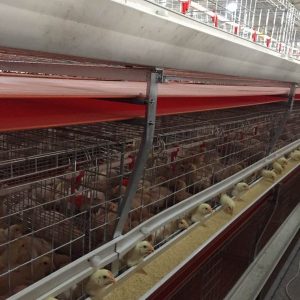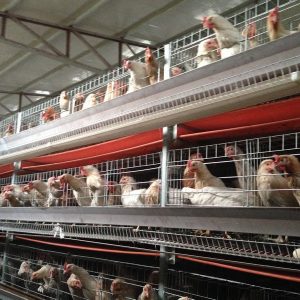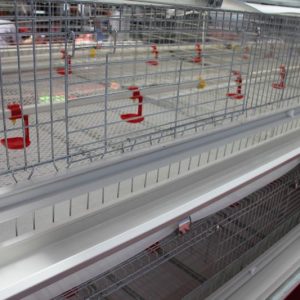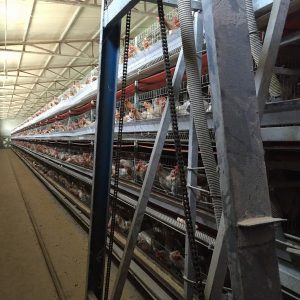
How to improve the efficiency of powder-shell laying hen breeding
How to improve the breeding efficiency of powder-shell laying hens? Pink-shell laying hens are relatively inexpensive to feed, and the benefits are still high. In this period of rising feed prices, it is undoubtedly a good way to get rich. How to raise powder-shell hens? How to improve the efficiency of powder-shell hens breeding?
Small powder shell layer breed advantages and breeding status
With the continuous maturation of breeding technology in China, local breeds have undergone multiple generations of breeding to form a series of unique small-sized powder-shell hen breeds, such as Nongda No. 3/5 and other series of diet-type hens, Huafeng, Xinyanghei , Jingfan No. 8 etc. have certain market competitiveness. The advantages of breeding small powder-shell hens are:
1. Low feed intake: Compared with high-yielding commercial egg-laying hens, this type of laying hen has a smaller body size. Generally, the daily feed intake of each adult laying hen is about 80 to 90 grams.
2. The price of eggs is high: small eggs with small shells have small egg shapes and good eggshell colors, so the price per kilogram will be higher than ordinary eggs by 1 to 3 yuan.
3. The price of eliminated chickens is high: small pink-shelled hens usually have certain characteristics such as feathers, meat crowns and claws, which are more beautiful, so the market price at the time of elimination is often higher than that of ordinary laying hens.
4. Strong disease resistance and low dead panning rate: small powder-shell hens have the advantage of cross-breeding, so the disease resistance is strong and the dead panning rate is low.
How to raise powder-shell hens?
The breeding of powder-shell hens should understand the scientific management measures of breeding to avoid falling into breeding mistakes.
Farmers newly introduced chicken breeds, must understand the previous breeding and development. Only in this way can we have an accurate starting point and correctly formulate the feeding management plan for this period, which can reflect the feeding goal and actual production situation more intuitively. Back-up chickens need to be regrouped around 18 weeks of age.
1. First of all, we must formulate a correct flock turnover plan, and be prepared to accept a breeding chicken breeding house.
2. Due to its own physiological changes, there is instability, and it is easy to induce serious stress reactions when transferring groups. Antibiotic drugs such as antibiotics and multidimensional should be used before transferring groups.
3. The chickens can be weighed when they are caged. According to their weight, they can be divided into three groups: large, medium and small.
4. Do weight control. Before the start of production, due to body maturity, development of the reproductive system and the need to pre-store some nutrients for the reproduction period, the body weight gain becomes larger, often at 110 g / piece / week (varies by variety). If the reserve feeding effect of the reserve chickens in the middle and early stages is better, the weight is at the lower limit of the standard, and the uniformity is more than 85%. By 20 weeks of age, the weight control should tend to the upper limit, then the production performance is better, which can exceed a certain item provided by the breeding company. Production indicators; for example, after the start of production, the egg production rate per week can exceed 3% -6%. Due to the needs of nutrient reserves, proper fat accumulation is important, but because of its extremely strong accumulation capacity and easy to cause over-fat, it is necessary to grasp this “slightly heavy” scale and control body weight gain in a coordinated manner. At this time, the individual differences in the body weight of the chickens, due to the size of their own skeletons, cannot blindly suppress the growth of overweight chickens, nor can they increase the growth rate of over-light chickens too fast like fattening broilers. Follow your own developmental needs to control weight. Body weight gain is slow during egg production, and it is important to ensure that it does not lose weight, which is especially important during peak periods.
How to improve the efficiency of powder shell laying hen breeding?
1. Alleviate the stress response and increase the peak of egg production: powder-shell hens have small guts, nervousness, are easily irritable and fried, and are prone to large stress responses to changes in the surrounding environment, resulting in large fluctuations in egg production rate. Special nutrients such as vitamin C and vitamin E and tryptophan and other nutritional additives with stabilizing and sedative effects need to be added to the feed to alleviate environmental stress, stabilize peak egg production rate, and prolong the peak egg maintenance time.
2. Repair the reproductive system and improve the color of the eggshell: While the egg production rate of the powder-shell laying hens gradually increases, if the feed nutrients are not supplemented in time, it will inevitably cause damage to the reproductive system to varying degrees, resulting in decreased secretion of the fallopian tubes and eggshell glands. Therefore, additional nutrients such as vitamin A, vitamin K, yeast selenium, and organic zinc are needed to repair the epithelial cells of the reproductive system, improve the secretory function of eggshell glands, and enhance the muscle recovery function after egg laying, so as to improve the color of the eggshell and reduce blood marks. The number of eggs and death caused by prolapse.
3. Activate the immune system and enhance the disease resistance: Small powder-shell hens should have the genetic potential of local chickens with strong disease resistance and low dead panning rate, but the dead panning rate is still high under current breeding conditions, so spores need to be added Bacillus, lactic acid bacteria, yeast and other micro-ecological preparations and vine tea flavonoids and other health-care functional additives, adjust the balance of intestinal flora, promote immune organ development and immune cell proliferation, improve the overall resistance of laying hens, reduce the occurrence or shortening of diseases The cure cycle after the onset reduces the medical expenses.
4. Help the digestive system and improve feed utilization: Some powder-shell laying hens have less feed intake, so while supplementing nutrients, it is particularly important to improve the utilization of nutrients in the feed, which requires additional external sources. Digestive enzymes and β-mannanase, xylanase and other non-starch polysaccharide enzymes can help laying hens better digest nutrients such as crude protein, crude fat and carbohydrates in the feed, improve feed utilization, and thus reduce At the same time of food intake, the utilization rate of effective nutrition is improved, the burden of liver and kidney excretion is reduced, and finally the egg production performance of the powder shell layer hen is improved.



